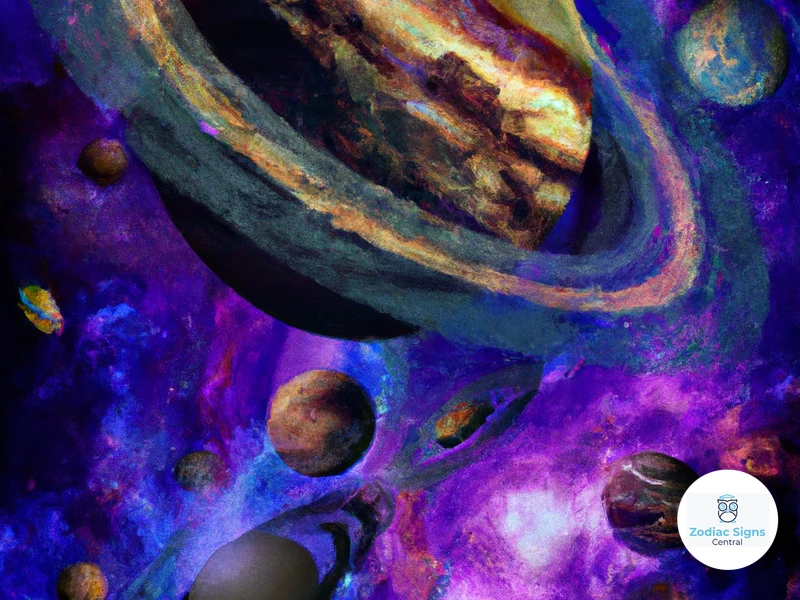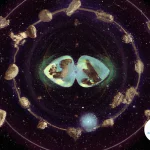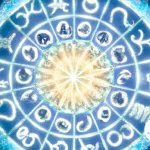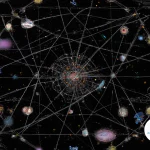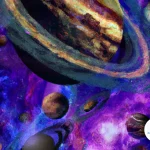Have you ever looked up at the night sky and wondered about the meaning behind the celestial dance of the planets? Planetary aspects hold the key to unlocking the intricate tapestry of energies at play in your birth chart. Understanding these aspects is like deciphering a cosmic code that reveals valuable insights into your personality, potential challenges, and opportunities for growth. In this article, we will delve into the hidden significance of the aspects between your planets, unveiling their deep significance and providing you with the tools to interpret their messages. So, buckle up and get ready to embark on an enlightening journey through the cosmos, as we unravel the mysteries behind the planetary aspects that shape your astrological destiny.
Understanding Planetary Aspects
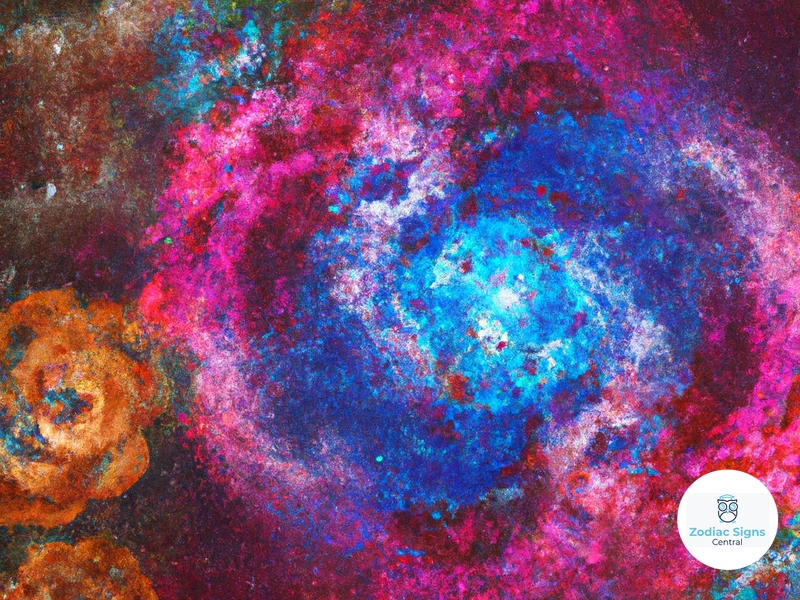
Planetary aspects refer to the angular relationships formed between two or more planets in an astrological birth chart. These aspects are like the conversations between different celestial bodies, and they have a profound influence on the energies and dynamics at play in a person’s life. By analyzing the aspects, astrologers can decipher the interactions and connections between the planets, providing valuable insights into an individual’s personality, relationships, challenges, and potentials.
There are several types of planetary aspects that astrologers consider when interpreting a birth chart. The most common aspects include:
– Conjunction: This occurs when two or more planets are closely aligned, merging their energies and creating a powerful focal point in a person’s life.
– Opposition: Opposing planets are located approximately 180 degrees apart, creating a tension-filled dynamic that often leads to a need for balance and integration.
– Trine: Trine aspects indicate harmony and flow, as planets are positioned approximately 120 degrees apart, working together effortlessly.
– Square: Square aspects are formed when planets are around 90 degrees apart, creating tension, challenges, and opportunities for growth.
Understanding planetary aspects is crucial in astrology because they provide essential information about the energies and dynamics within a birth chart. These aspects reveal the inherent strengths, weaknesses, and potential areas of conflict in a person’s life. By examining the planetary aspects, astrologers can gain a deeper understanding of a person’s motivations, behaviors, and the challenges they may encounter in various areas of life, such as relationships, career, and personal growth. Interpreting planetary aspects allows individuals to make informed decisions, navigate challenges, and harness their strengths to create a fulfilling and balanced life.
Now that we have a foundational understanding of planetary aspects, let us dive deeper into the meanings behind these aspects and explore their significance in shaping our astrological destiny.
What are Planetary Aspects?
Planetary aspects are the angular relationships formed between the celestial bodies, such as planets, in an astrological birth chart. These aspects are like the intricate threads that weave together the cosmic fabric of an individual’s life. They reveal how different planetary energies interact and influence each other, creating a unique tapestry of characteristics and experiences.
Each planetary aspect tells a story. It represents a specific connection and interaction between the planets involved, highlighting the way their energies harmonize, clash, or support each other. These aspects provide astrologers with valuable information about an individual’s personality traits, strengths, challenges, and potential life experiences.
When analyzing planetary aspects, astrologers examine the degrees of separation between the planets and the type of aspect formed. The degrees of separation determine the strength and intensity of the aspect, while the aspect type reveals the nature of the relationship between the planets.
The most common types of planetary aspects include the conjunction, opposition, trine, and square. The conjunction aspect occurs when two or more planets are closely aligned and merge their energies, creating a powerful focus point in the birth chart. The opposition aspect occurs when planets are approximately 180 degrees apart, creating a tension-filled dynamic that often requires balance and integration.
Trine aspects signify harmony and flow, as planets are positioned approximately 120 degrees apart, working together effortlessly. On the other hand, square aspects are formed when planets are around 90 degrees apart, creating tension, challenges, and opportunities for growth.
By deciphering the planetary aspects in a birth chart, astrologers gain valuable insights into an individual’s motivations, behaviors, and life experiences. They can identify areas of strength and potential challenges, helping individuals understand themselves better and navigate life’s complexities with clarity and purpose.
Now that we have a foundational understanding of what planetary aspects are, let us explore the different types of planetary aspects and their meanings in more detail, unraveling the significance they hold in shaping our astrological journey.
Types of Planetary Aspects
Types of Planetary Aspects can be categorized into different angular relationships formed between planets in an astrological birth chart. These aspects provide valuable insights into the dynamics and energies at play in a person’s life. Here are some of the main types of planetary aspects:
1. Conjunction: A conjunction occurs when two or more planets are closely aligned in the same sign or within a few degrees of each other. This aspect intensifies the energies of the planets involved, creating a potent blend of their influences. A conjunction signifies a merging of energies, amplifying the traits and characteristics associated with those planets. For example, a conjunction between Venus and Mars can signify a passionate and magnetic personality.
2. Opposition: An opposition happens when two planets are located approximately 180 degrees apart in the chart, creating a sense of tension and duality. This aspect reflects the need for balance and integration between the energies represented by the opposing planets. It often manifests as inner conflicts or external challenges that need to be resolved. For instance, an opposition between the Sun and Moon may symbolize a constant struggle between personal expression and emotional needs.
3. Trine: Trine aspects occur when planets are positioned approximately 120 degrees apart, forming harmonious connections. This aspect signifies flow, ease, and natural talents. Planets in a trine work together effortlessly, enhancing each other’s qualities. Trines are considered beneficial aspects and are often associated with opportunities and luck. For example, a trine between Mercury and Uranus can indicate exceptional communication skills and a quick and innovative mind.
4. Square: Square aspects are formed when planets are around 90 degrees apart. This aspect creates tension, challenges, and opportunities for growth. It signifies inner conflicts and obstacles that need to be overcome. Squares can be catalysts for change and personal development. For instance, a square between Saturn and Jupiter may represent a struggle between structure and expansion, requiring finding a balance between discipline and optimism.
By understanding the different types of planetary aspects and their influences, astrologers can gain a deeper understanding of a person’s unique chart and provide valuable insights into their personality, relationships, and life experiences. These aspects play a crucial role in shaping our astrological destiny and can guide us towards self-awareness and personal growth.
Importance of Planetary Aspects
The importance of planetary aspects in astrology cannot be overstated. These angular relationships between planets provide valuable insights into the dynamics and energies at play in a person’s life. Here are some key reasons why understanding planetary aspects is crucial:
1. Personal Growth: Planetary aspects reveal the unique challenges and opportunities for growth that an individual may face. By understanding these aspects, individuals can gain self-awareness and work towards personal development and self-improvement.
2. Relationship Dynamics: Planetary aspects shed light on how individuals interact and relate to others, including friends, family, and romantic partners. They can provide insights into compatibility, conflicts, and areas of harmony within relationships. For a deeper understanding of compatibility, you can explore zodiac signs compatibility.
3. Career Choices: The aspects between planets can influence one’s vocational inclinations, strengths, and potential challenges in professional life. By analyzing these aspects, individuals can make more informed decisions about their career path and find greater fulfillment in their work. For a specific example, check out recommended careers for Aries here.
4. Life Challenges: Planetary aspects can reveal potential areas of challenge and obstacles in different aspects of life, such as health, finances, and personal relationships. By being aware of these aspects, individuals can take proactive measures to overcome hurdles and navigate these challenges with resilience.
5. Cycles and Transits: Planetary aspects also play a significant role in understanding the influence of current transits and cycles. By considering the aspects formed between transiting planets and natal planets in a birth chart, astrologers can provide guidance on the energetic patterns and experiences individuals may encounter at any given time.
Understanding the importance of planetary aspects allows individuals to gain deep insights into themselves, their relationships, and their life experiences. By working with these aspects consciously, individuals can navigate life’s complexities with greater understanding and make choices that align with their true selves. The next section will explore the meanings behind major planetary aspects, providing a deeper understanding of their significance in astrology.
Meaning Behind Major Planetary Aspects
The major planetary aspects hold significant meaning and play a crucial role in shaping a person’s astrological portrait. Let’s explore the interpretations of these major aspects:
1. The Conjunction Aspect:
– When planets are in conjunction, they are closely aligned, sharing their energies and characteristics.
– Conjunctions create a powerful focal point and intensify the traits of the involved planets.
– This aspect indicates a potent merging of energies, leading to a heightened focus on the specific area of life represented by the planets involved.
2. The Opposition Aspect:
– Opposition occurs when planets are approximately 180 degrees apart, forming a direct line of tension.
– This aspect represents a polarizing dynamic, as the energies of the opposing planets often pull in different directions.
– The opposition highlights the need for balance and integration between the qualities represented by the involved planets.
3. The Trine Aspect:
– Trine aspects occur when planets are approximately 120 degrees apart, forming a harmonious connection.
– This aspect signifies a flow of energy and ease between the planets involved.
– Trines indicate natural talents, positive opportunities, and an innate ability to work with the qualities represented by the planets.
4. The Square Aspect:
– A square aspect forms when planets are approximately 90 degrees apart, creating a dynamic of tension and challenges.
– This aspect indicates internal conflicts, obstacles, and the need for growth and transformation.
– Squares can be catalysts for change and personal development, pushing individuals to confront and overcome difficulties.
By understanding the meanings behind these major planetary aspects, individuals gain valuable insights into their personality traits, relationships, and life experiences. These aspects provide astrologers with a framework to analyze and interpret the complexities of a birth chart, enabling individuals to navigate their paths with a deeper understanding of the cosmic influences at play. In the next section, we will explore the minor planetary aspects and their significance in astrological interpretation.
The Conjunction Aspect
The Conjunction aspect is one of the most potent and influential planetary aspects in astrology. It occurs when two or more planets are positioned closely together, typically within an orb of around 8 degrees. When planets are in conjunction, their energies merge and blend, creating a powerful focal point in a person’s life. This combination intensifies the energies of the involved planets, often amplifying their qualities and characteristics.
A planetary conjunction can signify a variety of things, depending on the planets involved. It can represent a merging of energies, talents, or traits. For example, a Sun-Mercury conjunction can indicate a person who possesses strong communication skills and intellectual prowess. Similarly, a Venus-Mars conjunction can denote someone with a passionate and harmonious approach to love and relationships.
However, the influence of the conjunction aspect can vary depending on the planets involved. Some conjunctions may produce harmonious effects, while others can be more challenging. For instance, a Saturn-Pluto conjunction might bring about intense transformation, but it can also create a sense of heaviness or restriction.
It is important to consider the sign and house placement of the conjunction as well, as this adds further layers of interpretation. The sign determines the qualities and characteristics expressed by the conjunction, while the house placement indicates which area of life the conjunction’s energy is most prominent.
The conjunction aspect is a powerful configuration that holds great potential for personal growth and development. Its influence can shape our personalities, relationships, and life experiences. Understanding the dynamics of a conjunction in your birth chart can provide valuable insights into your strengths, challenges, and areas where you can express your fullest potential. If you’re interested in exploring more about the impact of planetary aspects in love and relationships, consider checking out our article on”The Impact of Elemental Compatibility in Zodiac Love Matches” [insert link].
The Opposition Aspect
The Opposition Aspect is a significant aspect in astrology, representing a relationship between two planets that are approximately 180 degrees apart. This aspect creates a sense of polarity and tension between the involved planets. It symbolizes the need for balance, integration, and finding common ground.
When planets are in opposition, they often have contrasting energies and agendas. This can manifest as an internal conflict within the individual or external conflicts in relationships and interactions with others. The opposition aspect urges us to find harmony and understanding by recognizing and integrating both sides of the opposing planets’ qualities.
In a birth chart, the opposition aspect highlights areas of life where conflicts and challenges may arise. It shines a light on the dichotomies and contradictions that need to be reconciled for personal growth and development. For example, the opposition between Venus (representing love and relationships) and Mars (representing passion and desires) can bring about challenges in finding a balance between one’s personal needs and the needs of a partner. It may require learning to compromise, communicate effectively, and find ways to bridge the gap between emotional and physical desires.
The opposition aspect also offers an opportunity for growth and transformation. It encourages individuals to explore both sides of the spectrum and find a middle ground where they can express the positive qualities of both planets involved. It invites us to embrace the power of synergy and harness the energy of opposing forces to create a more harmonious and integrated existence.
It’s important to note that while the opposition aspect may present challenges, it also holds immense potential for personal development and self-awareness. By embracing the lessons and insights this aspect offers, individuals can gain a deeper understanding of themselves and others, leading to greater growth and fulfillment in various areas of life.
In the next section, we will explore another significant aspect, the Trine Aspect, which brings about a sense of harmony and flow between planets. Understanding the meaning behind the Trine Aspect is crucial for unlocking the positive energies and potentials within our birth charts.
The Trine Aspect
The trine aspect is considered one of the most harmonious and favorable aspects in astrology. When two planets are in trine, they form a 120-degree angle, creating a free-flowing exchange of energy between them. This aspect brings about a natural synergy, allowing the planets involved to work together effortlessly, enhancing their positive qualities and potentials.
When analyzing the trine aspect, astrologers consider the elements and signs involved. Trines between planets of the same element, such as fire with fire or water with water, tend to amplify the qualities associated with that element. For example, a trine between Venus in Aries and Mars in Leo can enhance passion, creativity, and self-expression.
The trine aspect symbolizes easy blessings and talents that come naturally to an individual. It represents areas of life where things seem to effortlessly fall into place, leading to success and fulfillment. For instance, a trine between the Sun and Jupiter can indicate good fortune, abundance, and a positive outlook on life.
However, it’s important to note that while the trine aspect presents opportunities, it does not guarantee automatic success. It is up to the individual to make the most of the gifts and potentials highlighted by the trine aspect. By taking advantage of the harmonious energy, individuals can cultivate and further develop their natural talents and abilities.
In relationships, the trine aspect often brings compatibility and a deep sense of understanding. When two individuals have trine connections in their birth charts, they intuitively complement each other’s strengths and support each other’s growth. This aspect fosters positive communication, mutual respect, and a harmonious partnership. If you want to explore more about how different zodiac signs can be compatible in love matches, you can check out the impact of elemental compatibility on zodiac love matches.
The trine aspect represents a beneficial and harmonious energy in astrology. It signifies areas of life where individuals can experience ease, abundance, and fulfillment. By understanding and embracing the potentials within the trine aspect, individuals can make the most of these favorable energies and create a balanced and rewarding life.
The Square Aspect
The Square Aspect is one of the most significant and powerful aspects in astrology. It occurs when two planets are approximately 90 degrees apart, creating a challenging and dynamic relationship between them. This aspect represents tension, conflicts, and obstacles that individuals may encounter in different areas of their lives. The energy created by the Square Aspect is intense and often pushes individuals out of their comfort zones, forcing them to grow and evolve.
When two planets form a square aspect, their energies clash and create friction. This can manifest as inner conflicts within a person or external challenges they face in their relationships, career, or personal endeavors. The square aspect acts as a catalyst for change and transformation, urging individuals to confront their fears, limitations, and areas of vulnerability.
The key to understanding and working with the square aspect is to embrace the lessons it offers. While it may present challenges, it also provides the opportunity for growth, resilience, and personal development. The square aspect teaches us to overcome obstacles, make difficult choices, and find creative solutions to our problems.
To better understand the square aspect, let’s explore some examples:
1. Venus square Mars: This aspect can create tension and conflicts in relationships, highlighting differences in values, desires, and approaches to intimacy. It requires individuals to find a balance between their desires and the needs of their partner, fostering open communication and compromise.
2. Sun square Saturn: This aspect can bring challenges in career and self-expression. It may manifest as self-doubt, fear of success, or hurdles in achieving one’s goals. The square aspect urges individuals to confront their insecurities and develop discipline, perseverance, and self-confidence.
3. Moon square Neptune: This aspect can create emotional confusion and a struggle to establish boundaries. It may lead to idealistic expectations in relationships or confusion surrounding one’s own feelings. The square aspect calls for emotional clarity, self-awareness, and the establishment of healthy emotional boundaries.
Navigating the square aspect requires patience, self-reflection, and a willingness to confront challenges head-on. It’s essential to embrace the lessons it offers and use its energy as a catalyst for personal growth and transformation. By acknowledging and working with the square aspect, individuals can harness its power to overcome obstacles and build a more fulfilling and balanced life.
Exploring Minor Planetary Aspects

Exploring minor planetary aspects sheds light on the subtler nuances and influences within an astrological birth chart. While major aspects receive much attention, the minor aspects can offer valuable insights into a person’s personality traits and tendencies. These lesser-known aspects may not have the same impact as the major aspects, but they still play a significant role in the overall astrological interpretation.
One such minor aspect is the Sextile. This aspect occurs when two planets are approximately 60 degrees apart. The Sextile aspect is considered harmonious, indicating opportunities for growth, creativity, and the potential to form beneficial connections. It encourages the blending of energies between the planets involved, fostering cooperation and synergy.
Another minor aspect is the Quincunx. Formed when two planets are approximately 150 degrees apart, the Quincunx aspect can be challenging to navigate. It represents a sense of unease or discomfort, highlighting areas of tension or imbalance that need addressing. This aspect often requires adjustments and adaptations to find equilibrium and resolution.
The Semi-Sextile aspect occurs when two planets are around 30 degrees apart. It signifies a subtle connection and interaction between the planets, although not as powerful as the major aspects. The Semi-Sextile brings a sense of opportunity and potential, urging individuals to explore new avenues and make small adjustments to achieve personal growth.
Lastly, we have the Semi-Square aspect, which occurs when two planets are around 45 degrees apart. This aspect brings a sense of tension and challenge, prompting individuals to address conflicts and find creative solutions. It encourages growth through overcoming obstacles and adapting to new circumstances.
While minor aspects may not have the same dramatic impact as major aspects, they still contribute to the overall astrological picture. They provide additional layers of insight and understanding, adding depth to the interpretation of a birth chart. By considering both major and minor aspects, astrologers can provide a more comprehensive analysis, uncovering hidden aspects of personality and potential challenges that may arise.
Now that we have explored the significance of minor planetary aspects, let us move on to understanding the interpretation of harmonious aspects and how they can shape our astrological journey.
The Sextile Aspect
The Sextile aspect is a harmonious and supportive aspect in astrology, occurring when two planets are approximately 60 degrees apart. It is considered one of the “easy” aspects, often bringing positive energy and opportunities for growth. When planets form a sextile aspect, they are said to be in friendly conversation, supporting each other’s energies and working together effortlessly.
In terms of interpretation, the Sextile aspect is seen as a facilitator of creativity, harmony, and cooperation. It enhances communication between the planets involved, allowing them to collaborate effectively in various areas of life. This aspect encourages the exploration and expression of talents and abilities, bringing about a sense of ease and flow in endeavors related to the planets involved.
For example, a sextile between Venus and Mars suggests a pleasant blend of love and passion, leading to harmonious and satisfying relationships. This aspect can enhance social charm, creativity, and self-expression, making it beneficial for artistic pursuits or career paths that involve diplomacy, negotiation, or collaboration. The harmonious energies of the planets involved make it easier to attract positive experiences and manifest desires effortlessly.
It’s important to note that while the Sextile aspect is generally considered favorable, it still requires conscious effort and action to fully utilize its potential. It is not a guarantee of success or complete ease, but rather an indication of opportunities and favorable conditions that can be harnessed effectively. Embracing the gifts and potentials offered by the Sextile aspect can lead to personal growth, expanded horizons, and the manifestation of long-held aspirations.
The Sextile aspect is a positive and supportive astrological configuration that brings ease, harmony, and opportunities for growth. It facilitates collaboration, creativity, and cooperation between the planets involved, allowing individuals to tap into their potential and manifest their goals. By understanding and harnessing the energies of the Sextile aspect, individuals can navigate life with greater flow and fulfillment, embracing the positive cosmic currents that guide their astrological journey.
The Quincunx Aspect
The Quincunx aspect, also known as the Inconjunct aspect, is a peculiar and intriguing planetary alignment in astrology. It occurs when two planets are approximately 150 degrees apart, creating a challenging and somewhat awkward energy connection. This aspect often brings a sense of tension and unease, requiring individuals to navigate through conflicting energies and adjust to different realms of life that seemingly don’t fit together smoothly.
When two planets form a Quincunx aspect, they belong to different elements and have contrasting energies. This misalignment can create a sense of discord or dissatisfaction, as the energies of these planets do not easily blend. It is like trying to mesh fire and water – an unusual combination that requires effort and adjustment to find a harmonious balance.
The Quincunx aspect challenges us to integrate these contrasting energies and find innovative ways to reconcile their influence. It asks us to discover creative solutions to seemingly incompatible aspects of our lives. This aspect often indicates areas where we need to make adjustments, compromises, and seek alternative paths to overcome challenges.
Individuals with Quincunx aspects in their birth charts may find themselves constantly seeking balance and adapting to changing circumstances. They may possess an innate ability to bridge the gap between disparate elements and find unconventional solutions. However, this aspect can also generate a lingering feeling of dissatisfaction or restlessness, as individuals strive to reconcile conflicting desires and aspirations.
It is important to understand that the Quincunx aspect serves as a catalyst for personal growth and transformation. It challenges us to embrace flexibility, open-mindedness, and a willingness to explore new avenues. By embracing the lessons of this aspect, we can learn valuable skills in adaptation, creativity, and finding harmony in the midst of apparent contradictions.
The Quincunx aspect brings an intriguing mix of challenge and opportunity. It urges us to navigate through conflicting energies, adapt to change, and find inventive ways to harmonize seemingly opposing aspects of our lives. It is a call to embrace flexibility, growth, and the art of finding balance amidst disparity. Understanding and working with the Quincunx aspect can lead to personal growth, resilience, and a deeper understanding of ourselves and the complexities of life.
The Semi-Sextile Aspect
The Semi-Sextile aspect is a subtle and understated connection between two planets in an astrological birth chart. This aspect occurs when two planets are approximately 30 degrees apart. While its influence may not be as prominent as some other aspects, the Semi-Sextile still holds significance in understanding the dynamics of a person’s chart.
When two planets form a Semi-Sextile aspect, they create a gentle link that encourages cooperation and collaboration between their energies. It represents a harmonious flow of energy that supports the blending of different aspects of an individual’s life. This aspect can be seen as a bridge that connects two planets, allowing them to work together in a constructive and productive manner.
The influence of the Semi-Sextile aspect is often subtle and may not be immediately apparent in a person’s life. It represents opportunities for growth and integration, but the individual may need to consciously recognize and take advantage of these opportunities. The Semi-Sextile aspect encourages adaptability and flexibility, as it calls for the individual to find common ground and make small adjustments to achieve harmony between the energies represented by the two planets involved.
In terms of interpretation, the Semi-Sextile aspect suggests that the energies of the planets involved can support and complement each other. It indicates a subtle synergy and a potential for productive collaborations. Individuals with this aspect may excel in areas that require cooperation, diplomacy, and finding common ground. They may possess the ability to navigate between different facets of their lives, balancing their energies effectively.
To make the most of the Semi-Sextile aspect, it is important for individuals to consciously recognize the opportunities for harmonious fusion and cooperation that this aspect presents. By embracing the strengths of both planets and utilizing the supportive energies, individuals can tap into their full potential and achieve a sense of balance and fulfillment in their lives.
In the next section, we will explore another minor planetary aspect – the Semi-Square – and uncover its meaning and implications in interpreting the complexities of astrological charts.
The Semi-Square Aspect
The Semi-Square aspect is an angular relationship between two planets in astrology. It occurs when two planets are approximately 45 degrees apart. This aspect combines the energies of both planets, creating a dynamic tension that requires attention and balance. While not as intense as a square aspect, the semi-square aspect still holds significant influence over a person’s life.
When two planets form a semi-square aspect, they create a sense of inner conflict and restlessness within an individual. This aspect often brings about challenges and obstacles that require growth and adaptation. It can indicate areas of tension and frustration that need to be addressed and integrated for personal development.
The planets involved in a semi-square aspect hold clues about the specific areas of life that may be affected. For example, a semi-square aspect between Venus and Mars can bring challenges in relationships and social interactions, highlighting the need for finding balance between individual desires and partnership dynamics. On the other hand, a semi-square aspect between Mercury and Uranus can indicate tension and conflict in communication, emphasizing the importance of clear and mindful expression.
In terms of personality traits, individuals with semi-square aspects may exhibit a strong drive for achievement and success. They may experience a sense of internal pressure to strive for perfection and may have a tendency to be self-critical.
To navigate the challenges brought by the semi-square aspect, it is essential to acknowledge and embrace both sides of the conflicting energies. This involves integrating and balancing the qualities represented by the planets involved in the aspect. Awareness of these tensions allows individuals to work towards finding solutions that harmonize the conflicting energies and promote personal growth.
The semi-square aspect in astrology represents a moderate level of tension and inner conflict. It highlights areas that require attention, balance, and integration for personal development. By understanding the energies at play in a semi-square aspect, individuals can navigate challenges, embrace growth opportunities, and work towards achieving a harmonious balance in their lives.
Interpreting Harmonious Aspects
Harmonious aspects in astrology are alignments between planets that signify ease, cooperation, and positive energy flow. These aspects provide a sense of balance and support in a birth chart, indicating areas of natural talent, opportunities for growth, and favorable situations. The two most common harmonious aspects are the trine and sextile aspects.
The trine aspect occurs when two planets are approximately 120 degrees apart, forming a harmonious triangle. This aspect encourages the planets to work together harmoniously and effortlessly, creating a smooth flow of energy. When planets are in a trine aspect, they enhance and support each other, allowing individuals to express their talents, abilities, and potentials with ease. The trine aspect is often associated with natural gifts, creativity, and favorable circumstances in various areas of life.
The sextile aspect is formed when two planets are approximately 60 degrees apart, creating a supportive and cooperative connection. This aspect brings opportunities for growth, collaboration, and creative solutions. Planets in a sextile aspect can complement each other’s energies, providing a harmonious blend of their individual qualities. This aspect encourages individuals to take advantage of opportunities and make positive changes in their lives.
When interpreting harmonious aspects, it is important to consider the specific planets involved and the houses they are located in. Each planet represents different aspects of life, such as personality traits, emotions, communication, and career. The houses in a birth chart indicate specific areas of life, such as relationships, finances, or spirituality. By understanding the combination of planets and houses in harmonious aspects, astrologers can provide valuable insights into an individual’s talents, potentials, and areas of ease and abundance.
For example, a trine between Venus and Jupiter may indicate a person who possesses natural charisma, a love for beauty, and a generous nature. This aspect can bring about favorable circumstances in relationships, artistic pursuits, and financial matters. Similarly, a sextile between Mercury and Uranus may suggest a person with a brilliant mind, innovative ideas, and the ability to communicate their thoughts in a unique and inspiring way.
Interpreting harmonious aspects allows individuals to embrace their strengths, tap into their potentials, and make the most of favorable opportunities in their lives. These aspects provide a sense of flow, harmony, and support, enabling individuals to manifest their desires and lead a fulfilling and purposeful life. Now, let’s explore another side of planetary aspects and delve into the challenging aspects that can present obstacles and opportunities for growth in our astrological journey.
Combining the Trine and Sextile Aspects
Combining the Trine and Sextile Aspects:
When the harmonious trine and sextile aspects come together in a birth chart, a powerful synergy emerges, offering opportunities for growth, creativity, and positive outcomes. These aspects bring together planets that are 120 degrees apart (trine) and 60 degrees apart (sextile), creating a harmonious flow of energy between them.
1. Trine Aspect: The trine aspect represents a natural ease and harmony between planets. It signifies talents, strengths, and areas where things come effortlessly to an individual. When combined with the sextile aspect, this harmony is enhanced, amplifying the positive qualities and facilitating smooth communication between the planets involved.
2. Sextile Aspect: The sextile aspect adds a touch of creative energy and opportunities for growth to the planetary connection. It represents potential and possibilities, encouraging individuals to explore new avenues and embrace their passions. When combined with the trine aspect, the sextile adds a dynamic element, fueling the positive energy exchange between the planets.
In combination, the trine and sextile aspects create a supportive environment for personal and professional endeavors. They signify ease of expression, strong intuition, and the ability to channel one’s creativity effectively. This combination promotes harmonious relationships, favorable circumstances, and a sense of fulfillment in various areas of life.
For example, if Venus (planet of love and harmony) forms a trine aspect with Jupiter (planet of expansion and abundance), and simultaneously, Venus forms a sextile aspect with Mars (planet of passion and drive), it suggests a potent combination. This configuration indicates that the individual has a natural affinity for love, is blessed with good fortune, and possesses the drive and passion to pursue their dreams. It implies that relationships may come easily, and there may be opportunities for growth and success in creative or artistic pursuits.
Combining the trine and sextile aspects in a birth chart signifies a harmonious interplay of energies and a supportive environment for personal growth. It is essential to embrace these energies and utilize them positively to manifest one’s desires and aspirations. By recognizing and harnessing the power of these aspects, individuals can navigate life with ease and create a fulfilling and balanced existence.
To explore more about the compatibility and potentials in relationships, you can check out our article on zodiac signs compatibility.
Understanding the Grand Trine Configuration
The Grand Trine Configuration is a powerful and harmonious aspect pattern in astrology. It occurs when three planets form an equilateral triangle in the birth chart, creating a flow of energy that operates with ease and grace. This configuration is often associated with innate talents, opportunities for success, and a sense of natural ability in specific areas of life. The planets involved in the Grand Trine have a mutual support system that enhances and reinforces their energies, creating a sense of fluidity and harmony.
The Grand Trine is renowned for its ability to bestow individuals with extraordinary gifts and abilities. Each planet within the configuration represents different areas of life and personality traits. When these planets form a Grand Trine, their energies combine to create a powerful synergy that amplifies their positive qualities.
Decoding Challenging Aspects
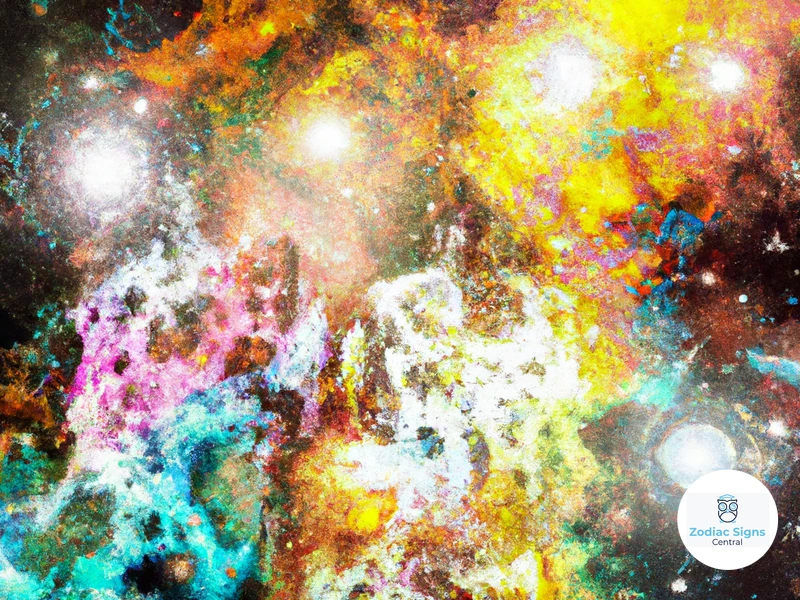
Decoding challenging aspects in astrology is an important aspect of understanding the complexities of a birth chart. These aspects highlight areas of tension, conflicts, and potential obstacles that individuals may encounter in their lives. While challenging aspects may bring difficulties, they also present opportunities for growth, self-awareness, and transformation.
One challenging aspect worth exploring is the T-Square. This aspect is formed when three planets create a dynamic triangle, with two planets in opposition and a third planet at the 90-degree angle, forming a square. The T-Square represents a significant internal struggle, as the opposition creates tension and the square intensifies the conflict. Individuals with a T-Square aspect may face recurring challenges and find themselves pulled in different directions. However, the T-Square also offers the opportunity for personal growth and transformation by providing the motivation to find creative solutions and balance conflicting energies.
Another complex aspect is the Yod aspect pattern, sometimes called the “Finger of Fate”. The Yod is formed when two planets are sextile (60 degrees apart), and both planets form an inconjunct aspect (150 degrees) to a third planet. This configuration creates a profound sense of destiny and a feeling of being compelled towards a particular path or purpose. Individuals with a Yod aspect often experience a deep calling or a sense of mission, but they may also face challenges and obstacles in fulfilling that purpose. The Yod aspect urges individuals to navigate their unique path, integrate conflicting energies, and embrace their destiny with courage and determination.
Decoding these challenging aspects requires a deep understanding of the individual’s birth chart and the specific energies at play. It is important to approach these aspects with compassion and openness, recognizing that they offer valuable lessons and opportunities for personal growth. By exploring and embracing the challenges presented by these aspects, individuals can harness their inner strength, overcome obstacles, and ultimately achieve a greater sense of self-awareness and fulfillment.
Decoding challenging aspects in astrology is a complex yet rewarding endeavor. The T-Square and Yod aspects are just two examples of the intricate dynamics that shape our astrological journey. By understanding and embracing these challenging aspects, individuals can navigate their lives with greater awareness, resilience, and purpose.
The T-Square and Its Implications
The T-Square is a challenging aspect in astrology that consists of three planets forming a triangle shape in the birth chart, where two planets are in opposition to each other and both are square to a third planet. This configuration creates a dynamic tension that can manifest as internal conflicts and external challenges.
The implications of a T-Square aspect are multifaceted and can be both difficult and transformative. It represents a focal point of unresolved energy that often triggers intense personal growth and the need to find balance and resolution. The planets involved in the T-Square reflect the areas of life where these challenges will arise.
The planet at the apex of the T-Square is of particular importance as it represents the key source of tension and transformation. Its placement and aspects provide insight into the core issues and lessons that need to be addressed. The planets in opposition indicate opposing forces or desires, and the planet at the square reveals the catalyst for change and growth.
Individuals with a T-Square aspect may experience a sense of internal tension and struggle in the areas of life related to the planets involved. This aspect often signifies a need for integration, adjustment, and self-awareness. It can push individuals to confront their fears, limitations, and unresolved conflicts, encouraging them to find creative solutions and develop new approaches.
While the T-Square aspect can be challenging, it also offers significant opportunities for personal development and transformation. It serves as a catalyst for growth, pushing individuals out of their comfort zones and encouraging them to embrace change. By recognizing and working with the energies of the T-Square, individuals can learn to navigate challenges, gain self-awareness, and ultimately transform their lives.
The T-Square aspect is a powerful configuration in astrology that signifies a focal point of tension and growth. Its implications are vast, providing opportunities for self-discovery, personal development, and the integration of oppositional energies. By embracing the lessons and challenges presented by the T-Square, individuals can navigate their paths with greater awareness, resilience, and ultimately achieve personal transformation.
The Yod Aspect Pattern
The Yod aspect pattern, also known as the “Finger of God,” is a unique and intriguing configuration in astrology. It is formed when two planets are in sextile aspect (approximately 60 degrees apart) and both form a quincunx aspect (approximately 150 degrees) to a third planet. This creates a distinctive triangular shape, with two planets at the base and the third planet at the apex. The Yod aspect pattern is often seen as a powerful astrological formation with significant implications.
The Yod aspect pattern is considered a challenging configuration, as it brings together two seemingly unrelated energies that are connected to a third focal point. This creates a sense of tension and pressure, as the energy of the apex planet needs to find a way to integrate the seemingly conflicting energies of the base planets. The Yod is often associated with a sense of destiny, as its presence in a birth chart suggests that the individual has a unique purpose or mission to fulfill in their lifetime.
Those who have a Yod in their birth chart are often highly intuitive and sensitive individuals. They may have a deep sense of calling or a strong desire to make a significant impact in the world. The energy of the Yod can manifest as a constant feeling of being pulled in different directions, as the individual navigates the challenges of balancing the energy of the base planets and the demands of the apex planet.
The Yod aspect pattern requires careful navigation and integration of the energies involved. It presents a powerful opportunity for growth and transformation if harnessed effectively. Individuals with a Yod in their birth chart are often faced with complex life lessons and may encounter unexpected twists and turns on their path. However, by embracing the challenges and working with the energies of the Yod, individuals can tap into their unique gifts and talents, ultimately fulfilling their higher purpose.
The Yod aspect pattern is a fascinating configuration in astrology that highlights a person’s unique destiny and purpose. It represents a challenge that requires the integration of seemingly conflicting energies and the navigation of complex life lessons. By understanding and working with the energy of the Yod, individuals can unlock their potential and fulfill their higher calling.
Conclusion
In conclusion, uncovering the meaning behind the aspects between your planets provides a wealth of valuable insights into your astrological blueprint. By understanding and interpreting the various planetary aspects, you can gain a deeper understanding of your personality traits, relationships, challenges, and potentials. The conjunction aspect brings powerful merging energies, while the opposition aspect highlights the need for balance and integration. Trine aspects signify harmony and flow, while square aspects present opportunities for growth and transformation.
Additionally, exploring minor planetary aspects like the sextile, quincunx, semi-sextile, and semi-square can offer even more nuanced interpretations. Harmonious aspects like the trine and sextile can indicate ease and natural talents, while challenging aspects like the T-square and Yod aspect pattern bring intense dynamics and potential obstacles to overcome.
By delving into the meanings behind these aspects, you can gain a profound understanding of the intricacies and complexities of your birth chart. Armed with this knowledge, you can navigate life’s challenges with greater awareness and make informed decisions that align with your truest self.
Remember, astrology is an art that combines cosmic energies and human interpretation. While understanding planetary aspects is a powerful tool, it is important to consider the entirety of your birth chart to obtain a comprehensive understanding of your astrological profile. So, embrace the language of the stars, delve into the mysteries of planetary aspects, and unlock the wisdom they hold, allowing you to create a life imbued with purpose, fulfillment, and self-realization.
Frequently Asked Questions

What role do planetary aspects play in astrology?
Planetary aspects reveal the interactions and connections between different celestial bodies in a birth chart. They provide valuable insights into an individual’s personality, relationships, challenges, and potentials.
How do astrologers interpret planetary aspects?
Astrologers analyze the angular relationships and energies formed between planets. They consider the type of aspect, the planets involved, and their placement in the birth chart to interpret the influence and significance of the aspect.
What is the significance of a conjunction aspect?
A conjunction aspect occurs when two or more planets are closely aligned. It signifies a merging of energies and a powerful focal point in a person’s life. This aspect often intensifies the traits and energies associated with the planets involved.
What does an opposition aspect indicate?
An opposition aspect reflects a tension-filled dynamic between opposing planets, positioned approximately 180 degrees apart. It often highlights the need for balance, integration, and understanding between the energies represented by the planets.
How do trine aspects influence a birth chart?
Trine aspects indicate harmony and flow between planets, which are typically positioned about 120 degrees apart. They contribute to natural talents, ease in communication, and the ability to work together effortlessly in different aspects of life.
What challenges are associated with square aspects?
Square aspects, formed when planets are approximately 90 degrees apart, create tension and challenges in a birth chart. They push individuals to address conflicts, overcome obstacles, and grow personally and spiritually.
What is the significance of the sextile aspect?
The sextile aspect signifies opportunities and harmonious connections between planets, positioned approximately 60 degrees apart. It represents areas where individuals can find ease, cooperation, and potential for success.
What does the quincunx aspect indicate?
The quincunx aspect reflects an awkward and challenging relationship between planets, positioned approximately 150 degrees apart. It signifies a need for adjustment, adaptation, and finding a middle ground between the energies involved.
What is the importance of the semi-sextile aspect?
The semi-sextile aspect represents a minor aspect formed when planets are about 30 degrees apart. It suggests a subtle and supportive influence, highlighting areas where individuals can find cooperation, growth, and the potential for positive change.
How does the T-Square aspect pattern affect a birth chart?
The T-Square aspect pattern involves a challenging configuration between three planets, forming two squares and one opposition. It signifies areas of tension, conflict, and growth where individuals are pushed to find balance, resolutions, and personal transformation.
References
- Explore Your Astrological Birth Chart: A Guide to Houses …
- A guide to the planets in astrology and their meanings
- The Power of Birth Charts: Unveiling Your Astrological …
Frequently Asked Questions

FAQ 1: How do planetary aspects influence our lives?
Planetary aspects are celestial alignments that interact with each other and bring different energies to our lives. They can affect our personality, relationships, and life events, providing us with insights into our strengths, challenges, and opportunities.
FAQ 2: Can planetary aspects determine compatibility in relationships?
Yes, planetary aspects play a crucial role in determining compatibility in relationships. Harmonious aspects like trines and sextiles indicate ease and compatibility, while challenging aspects like squares and oppositions can lead to conflicts and tension. Understanding these aspects can help improve communication and navigate relationship dynamics.
FAQ 3: Which aspect represents harmony and cooperation?
The trine aspect represents harmony and cooperation between planets. It signifies a flow of positive energy, smooth interactions, and effortless communication. People with strong trine aspects in their birth charts tend to have natural talents, get along well with others, and experience favorable circumstances.
FAQ 4: Are all opposition aspects negative?
No, not all opposition aspects are negative. While oppositions represent tension and contrasting energies, they also offer opportunities for growth, balance, and integration. By understanding the challenges and lessons associated with oppositions, we can learn to find a middle ground and bridge differences.
FAQ 5: How can we benefit from understanding minor planetary aspects?
Minor planetary aspects, like sextiles and quincunxes, offer subtle influences and nuances to our interpretations. They provide additional insights into our personality traits, talents, and challenges. By exploring these minor aspects, we can gain a more comprehensive understanding of our astrological makeup.
FAQ 6: What is the significance of the sextile aspect?
The sextile aspect represents opportunities, creativity, and easy communication between planets. It indicates a harmonious flow of energy that supports cooperation, growth, and manifestation of goals. People with strong sextile aspects in their birth charts often have a knack for finding solutions and making positive connections.
FAQ 7: How does the T-Square aspect pattern influence our lives?
The T-Square aspect pattern brings intensity and challenges into our lives. It consists of three planets forming two squares and one opposition, creating a dynamic tension. This aspect pattern pushes us to address conflicts, make difficult choices, and find innovative solutions. It can be a catalyst for personal growth and transformation.
FAQ 8: What is the Yod aspect pattern and its implications?
The Yod aspect pattern, also known as the “Finger of Fate,” is a rare and powerful configuration. It involves two planets in a sextile aspect, both of which are quincunx to a third planet. The Yod represents a significant turning point, indicating important life lessons, karmic challenges, and the need for adjustment and redirection.
FAQ 9: Can we interpret planetary aspects in isolation?
No, it is essential to consider planetary aspects in the context of the entire birth chart. Each aspect interacts with other aspects and the overall planetary configuration, influencing its meaning and manifestation. Looking at the bigger picture helps create a more accurate and holistic interpretation.
FAQ 10: How can we make the most of challenging aspects?
Challenging aspects provide opportunities for growth and self-development. By acknowledging and embracing the lessons they bring, we can become more aware of our limitations, work on our weaknesses, and transform them into strengths. Challenging aspects ultimately contribute to our personal evolution and resilience.
References
- Everything You Need To Know About Aspects In Astrology
- Explore Your Astrological Birth Chart: A Guide to Houses …
- Planetary Aspects List; Astrology Aspects Meaning …

